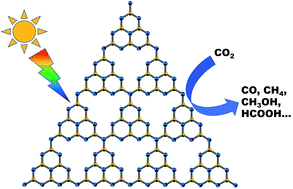Recent advancements in g-C3N4-based photocatalysts for photocatalytic CO2 reduction: a mini review
Abstract
Carbon dioxide (CO2) is a very important micro-molecular resource. Using CO2 captured from the atmosphere for high-output synthesis of chemicals as raw materials has great significance and potential for various industrial applications. Since the industrial revolution in the 18th century, manmade CO2 emission has increased by 45%, which negatively impacts the planetary climate by the so-called greenhouse effect. Therefore, high-efficiency photocatalysis and photocatalysts for CO2 conversion have become the most important challenges and milestones throughout the world. In consideration of this, various catalysts have been explored. Among these, graphitic carbon nitride (g-C3N4) as a semiconductor is emerging as a highly promising photocatalyst for removing CO2 from the atmosphere. Moreover, due to its excellent chemical stability and unique band structure, g-C3N4 has exhibited significant application potential for photocatalysis. This review summarizes the advancements that have been made in the synthesis and photocatalytic applications of g-C3N4-based catalysts for CO2 reduction in recent years and explains the future challenges and prospects in this vital area of research.

- This article is part of the themed collection: 2020 Reviews in RSC Advances


 Please wait while we load your content...
Please wait while we load your content...